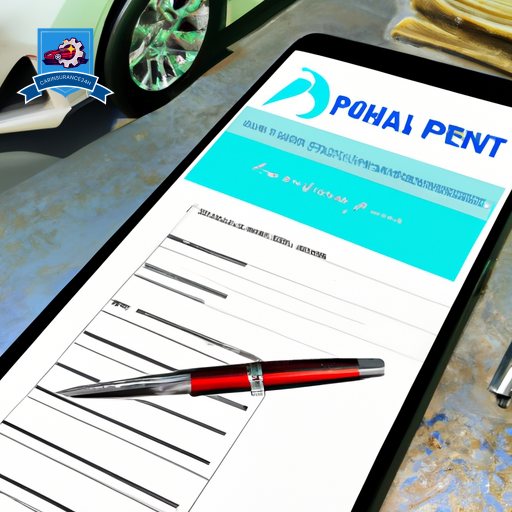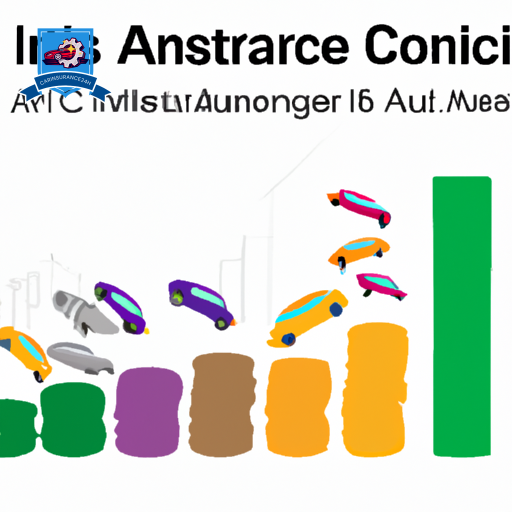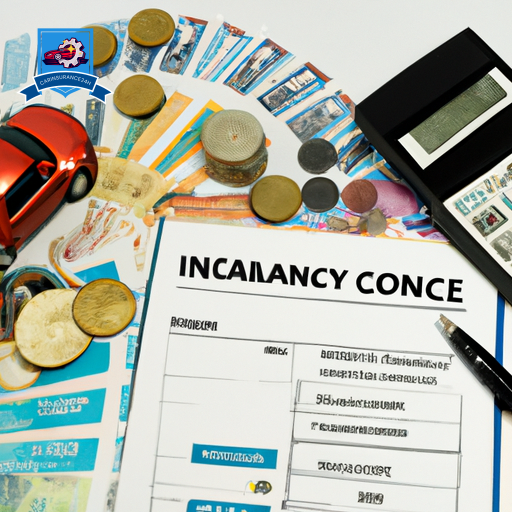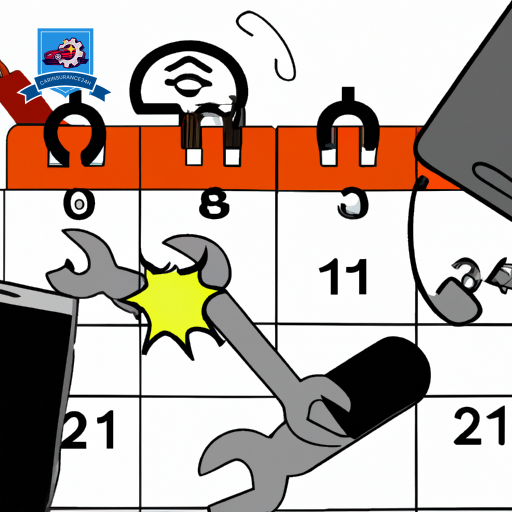Filing a collision insurance claim can often seem like a challenging task, yet it is an essential step in ensuring that you are adequately compensated for any damages sustained in an automobile accident. The process begins at the accident scene, where evaluating the situation and exchanging information with any other parties involved lay the groundwork for a successful claim.
Documenting the damage meticulously and understanding your insurance policy’s nuances are pivotal before reporting the incident to your insurance provider. As we explore the intricacies of this process, it becomes evident that there are strategic approaches to navigate this complex procedure effectively, which we will discuss in further detail.
Assessing the Accident Scene

Before initiating any collision insurance claim, it is imperative to thoroughly assess the accident scene for both immediate safety concerns and documentation purposes. Ensuring safety first is paramount; this involves checking on all involved parties for injuries and moving to a secure location away from oncoming traffic to prevent further accidents. Once safety is assured, the focus shifts to understanding the legal implications of the incident. This step is critical in building a strong foundation for your insurance claim.
Documenting the scene meticulously can have a profound impact on the outcome of your claim. This involves taking note of the accident’s specifics, including the time, date, and exact location, alongside weather and road conditions which could have contributed to the accident. Photographs of the vehicles involved, paying close attention to the points of impact and surrounding area, can provide invaluable evidence for your claim.
Exchanging Information

Following the thorough assessment of the accident scene, it is equally important to proceed with the exchange of information between all parties involved. This step is vital not only for filing an insurance claim but also for adhering to legal obligations. The process guarantees that all necessary details are gathered to facilitate a smooth claims process and to comply with any legal requirements.
When exchanging information, consider the following:
- Contact Details: Exchange names, addresses, phone numbers, and email addresses with all parties involved, including witnesses. This guarantees everyone can be reached for follow-up information or clarification.
- Insurance Information: Share insurance company names and policy numbers. This is critical for initiating the claim process and verifying coverage.
- Vehicle Information: Note down the make, model, color, and license plate number of all vehicles involved. This aids in the accurate documentation of the incident.
- Report to Emergency Services: If applicable, obtain a copy of the police report or the report number. Reporting to emergency services can have significant legal implications, and the report serves as an official record of the accident.
Exchanging information is a foundational step in the claims process, setting the stage for an organized approach to resolving the aftermath of a collision. It’s essential to approach this step methodically, ensuring all necessary data is collected while remaining aware of the legal implications. Involving emergency services when necessary not only complies with the law but also adds an official layer of documentation to support your claim.
Documenting the Damage
After exchanging necessary information, it is important to accurately document the damage to all vehicles involved in the collision. This step is pivotal for several reasons, including providing a clear record for insurance companies and helping to determine repair estimates. The condition of the vehicle pre and post-accident can have a major impact on the vehicle value, making thorough documentation critical for a fair assessment.
Documenting vehicle damage involves taking detailed photos from multiple angles, making sure that the extent of the damage is well captured. It’s advisable to photograph both the damaged areas and the vehicle as a whole to provide a complete picture of its condition. Besides visual documentation, writing down any mechanical issues noticed post-collision can be helpful. This includes any new noises, difficulties in handling, or operational failures that weren’t present before. Such details can influence repair estimates and, by extension, the insurance claim.
To organize the documentation, consider the following table layout:
| Vehicle Part | Visual Damage | Notes on Functionality |
|---|---|---|
| Front Bumper | Deep scratches, small dent | None |
| Rear Door (Driver’s Side) | Large dent, paint chipping | Difficulty opening |
| Windshield | Cracked | Impairs visibility |
| Headlight (Passenger Side) | Broken | Light not functioning |
| Wheel (Rear Passenger Side) | Bent rim | Slight vibration when driving |
This structured approach not only aids in filing a thorough insurance claim but also serves as a record for future reference. Remember, the goal is to make sure that all damage is accounted for, so that repair estimates reflect the true extent of the damages, ultimately preserving the vehicle’s value.
Reporting to Insurance
After meticulously documenting the damage, the next important step in filing a collision insurance claim involves reporting the incident to your insurance provider. This process begins with gathering all necessary information, including accident reports and any photographic evidence of the damage.
Promptly contacting your insurance provider guarantees that your claim is processed efficiently and without unnecessary delay.
Gather Required Information
Before initiating a collision insurance claim, it is essential to compile all necessary documents and information to guarantee a smooth and efficient process. Having the right documents at your fingertips not only expedites the claim but also ensures that all aspects of the incident are accurately represented. Key documents to gather include:
- Police report: A critical document that provides an official account of the incident.
- Medical records: If medical attention was required, these records detail the extent of injuries and treatments.
- Photos of the damage: Visual evidence to support your claim.
- Witness statements: If available, statements can corroborate your account of the events.
Ensuring you have these documents ready can significantly influence the outcome of your collision insurance claim process.
Contact Insurance Provider
Once all necessary documents are gathered, the next step in the collision insurance claim process involves contacting your insurance provider to report the incident. This phase is important and directly influenced by earlier decisions made during provider selection and policy comparison.
Selecting the right provider and understanding the nuances of your policy can greatly streamline the reporting process. When reaching out, make sure you have your policy number, the details of the incident, and any supporting documentation at hand. Clear communication is key.
Provider selection and thoughtful policy comparison play a pivotal role in how efficiently and effectively your claim is handled. This step underscores the importance of not only choosing the right insurance provider but also understanding the intricacies of your policy to facilitate a smooth claim process.
Understanding Your Policy
Understanding the specifics of your collision insurance policy is essential to managing the claims process effectively. Before a collision occurs, being familiar with the details of your policy can greatly streamline the claims process, making sure you are adequately prepared to navigate the complexities involved.
Key aspects such as coverage limits and policy exclusions play a pivotal role in determining how your claim will be handled and what compensation you may be entitled to.
To deepen your understanding, consider the following aspects of your collision insurance policy:
- Coverage Limits: These define the maximum amount your insurance provider will pay for a claim. Knowing these limits helps you understand your financial liability in the event of a collision.
- Policy Exclusions: Certain scenarios or types of damage may not be covered under your policy. Familiarizing yourself with these exclusions can prevent surprises during the claims process.
- Deductible Amount: Your policy’s deductible is the amount you pay out of pocket before your insurance coverage kicks in. Understanding how your deductible affects your claim can help in financial planning post-collision.
- Claim Filing Deadline: Insurance policies often have time limits within which you must file a claim following a collision. Being aware of this timeline is critical to make sure you do not forfeit your coverage.
Following Up on Claims
After submitting a collision insurance claim, the next critical step involves actively following up to guarantee its progress and resolution.
It is essential to maintain open lines of communication with your adjuster and to understand the process for tracking the claim’s status.
Additionally, knowing how to navigate potential disputes can expedite the settlement process and lead to a more favorable outcome.
Tracking Claim Progress
Monitoring the progress of your collision insurance claim is an important step in ensuring a timely and fair resolution. In today’s digital age, insurance companies provide various tools to help policyholders stay updated on their claim status. The utilization of online portals and mobile apps has made it easier for individuals to track their claim progress with just a few clicks. Here are several key methods to efficiently follow up on your claim:
- Utilize online portals for real-time updates.
- Download the insurer’s mobile app for notifications.
- Check your email regularly for communication from the insurance company.
- Set reminders to follow up if updates are not received in a timely manner.
These steps can greatly enhance your experience by providing clarity and control over the claims process.
Communicating With Adjusters
Effective communication with adjusters is a key step in the process of following up on your collision insurance claim. Understanding adjuster qualifications is vital as it equips you with the knowledge of whom you’re dealing with, ensuring your discussions are productive and focused.
Adjusters are trained professionals skilled in evaluating insurance claims, and recognizing their expertise can facilitate a more collaborative dialogue. Employing negotiation tactics can also be instrumental in this phase. Articulate your points clearly, provide all necessary documentation to support your claim, and be open to compromise without undermining the value of your claim.
This approach not only streamlines the process but also enhances the possibility of achieving a favorable outcome in your insurance claim follow-up.
Resolving Claim Disputes
Despite diligent efforts to communicate effectively with insurance adjusters, disputes over collision insurance claims can arise, necessitating a focused approach to resolution. When disagreements emerge, understanding the avenues for dispute resolution can empower policyholders to navigate these challenges with confidence.
Key strategies include:
- Seeking legal representation to guarantee your rights are protected and your case is effectively presented.
- Requesting a second opinion or appraisal to challenge the insurance company’s valuation.
- Engaging in the arbitration process, a less formal alternative to litigation that can resolve disputes more quickly.
- Filing a complaint with your state’s insurance department as a last resort if other methods fail.
Frequently Asked Questions
How Do I Determine if My Insurance Rates Will Go up After Filing a Collision Claim?**
To determine if your insurance rates will increase after filing a claim, consider the rate factors such as claim severity and your policy’s terms. Rates are often reassessed at policy renewal, reflecting any relevant changes.
What Should I Do if I Disagree With the Insurance Company’s Assessment of Fault or the Amount Offered for Repairs?**
If you disagree with the insurance company’s assessment of fault or repair costs, consider seeking legal representation. Skilled attorneys can employ negotiation tactics to dispute the insurer’s decision and advocate for your rightful compensation.
Can I Choose My Own Repair Shop, or Must I Use One Recommended by the Insurance Company?**
Policyholders generally have the right to select their own repair shop. However, choosing a shop with reputable certifications and repair warranties may be advisable, even if the insurance company recommends different facilities for vehicle repairs.
How Does Filing a Collision Claim Affect My Insurance Deductible?**
Exploring the maze of insurance, submitting a collision claim can reshape your deductible’s terrain. This modification affects premium calculation and may cascade through to policy renewal, prompting a requirement for strategic financial planning and foresight.
What Steps Can I Take if My Claim Is Denied, or the Settlement Is Delayed Beyond a Reasonable Timeframe?**
If your claim is denied or experiences unreasonable delays, gather all relevant claim documentation and initiate the appeal process. This approach guarantees a structured and logical challenge to the insurer’s decision, potentially expediting resolution.










